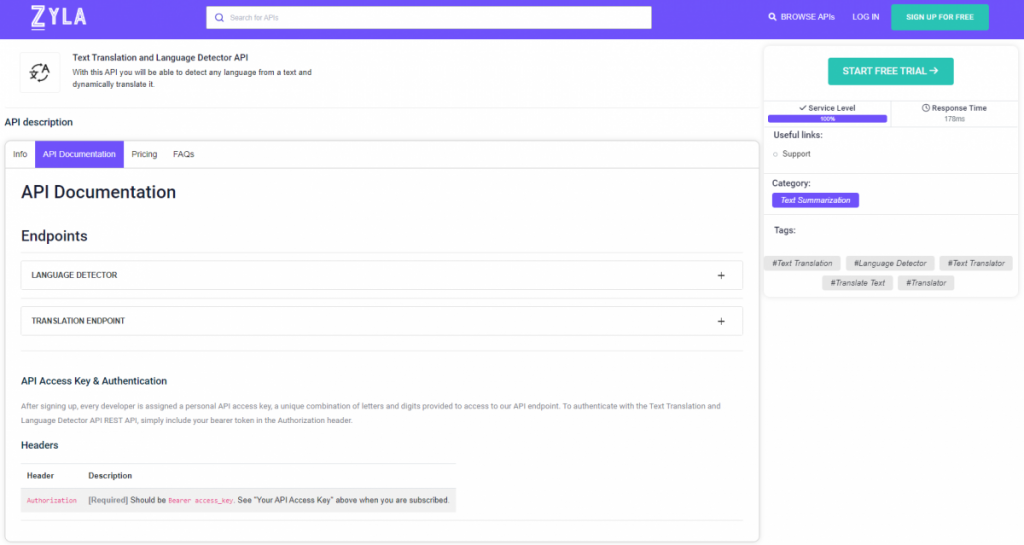In today’s rapidly evolving technological landscape, the integration of advanced functionalities into applications has become paramount for maintaining a competitive edge. One such transformative feature is the integration of a Language Recognition API, which holds the potential to revolutionize the way users interact with apps. This article delves into the realm of Language Recognition APIs, their advantages, and the key factors to consider when selecting the right API for your application.
Language Recognition APIs, often referred to as Speech Recognition APIs, are tools that empower applications to understand and interpret spoken language. Their significance lies in the seamless interaction they enable between users and applications, bridging the gap between human communication and digital technology. These APIs utilize cutting-edge natural language processing algorithms facilitating actions and responses within the application.

Benefits of Integrating Language Recognition APIs
First and foremost, the integration of Language Recognition APIs profoundly enhances user experience and accessibility across various applications. Whether it’s a customer service chatbot, a content recommendation engine, or a language learning app, the ability to comprehend and respond to user-generated text in a natural and contextually relevant manner elevates engagement. This capability fosters a sense of interaction and relatability, making the application more user-friendly and effective in delivering its intended functionality.
Furthermore, the utilization of Language Recognition APIs streamlines data analysis and insights generation. Businesses are inundated with vast amounts of textual data, ranging from customer feedback to social media posts. By harnessing the power of API-driven language recognition, this textual data can be efficiently processed, categorized, and analyzed to extract valuable insights. This, in turn, aids in informed decision-making, trend identification, and the formulation of targeted strategies.
Additionally, the integration of such APIs enables applications to bridge linguistic and cultural gaps, facilitating multilingual communication and cross-cultural interaction. With the global interconnectedness of modern society, applications that can seamlessly switch between languages and cater to diverse user bases hold a distinct competitive advantage. Written Language Recognition APIs empower applications to transcend language barriers, thus broadening their reach and impact.
Choosing the Right Language Recognition API
When selecting a language recognition API, several factors warrant careful consideration. These include accuracy, speed, available languages, and integration complexity. Thoroughly evaluating these aspects ensures the chosen API aligns with the specific needs and goals of the application.
A plethora of language recognition APIs are available in the market, each with its unique features and offerings. Exploring the features, pricing, and user feedback for each API aids in making an informed decision.
Integrating a language recognition API into an application requires a sound understanding of the API’s documentation and available resources. Developers should have access to comprehensive documentation, sample code, and support channels to ensure a smooth integration process. Choosing an API provider that offers robust developer resources can significantly streamline the implementation.
Check Text Translation and Language Detector API
The Text Translation and Language Detector API is a powerful tool. It can help you to overcome language barriers and reach a global audience. With this API, you can easily detect the language of any text and translate it into over 100 languages. The API is also highly accurate, with a 95% accuracy rate.

Here are some of the benefits of using the Text Translation and Language Detector API:
- Overcome language barriers: The API can help you to translate your content into over 100 languages, so you can reach a global audience.
- Improve customer service: The API can help you to provide better customer service by translating your support documentation and FAQs into the languages of your customers.
- Expand your business: The API can help you to expand your business into new markets by translating your website and marketing materials into the languages of your target audience.
If you are looking for a powerful and accurate language translation API, then the Text Translation and Language Detector API is a great option. The API is easy to use and affordable, making it a great choice for businesses of all sizes.
All You Need To Do To Make Use Of It Is:
- First, go to Text Translation and Language Detector API and click the “START FREE TRIAL” button.
- You will be able to access the API once you have registered with the Zyla API Hub.
- Depending on your needs, use one of the numerous API endpoints.
- After locating the appropriate endpoint, click the “test endpoint” button to make an API call and examine the results on your screen.
This API has two endpoints:
If you introduce “All that is gold does not glitter, not all those who wander are lost”to the “LANGUAGE DETECTOR” endpoint, will give you an API response like the following:
{
"data": {
"detections": [
[
{
"language": "en",
"confidence": 1,
"isReliable": false
}
]
]
}
}If you introduce “All that is gold does not glitter, not all those who wander are lost” to the “TRANSLATION ENDPOINT” endpoint and chose Italian, the API response should look like this:
{
"data": {
"translations": [
{
"translatedText": "Tutto ciò che è oro non luccica, non tutti quelli che vagano sono perduti"
}
]
}
}Want to learn more? Read What Is A Text Translation And Language Detector API?

